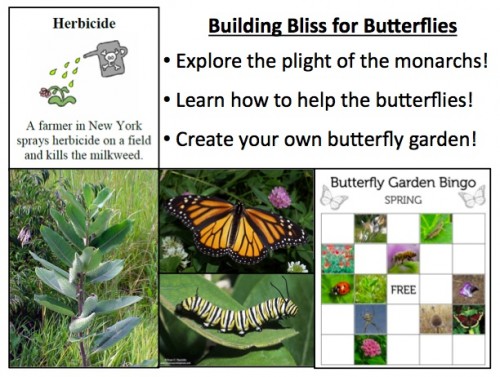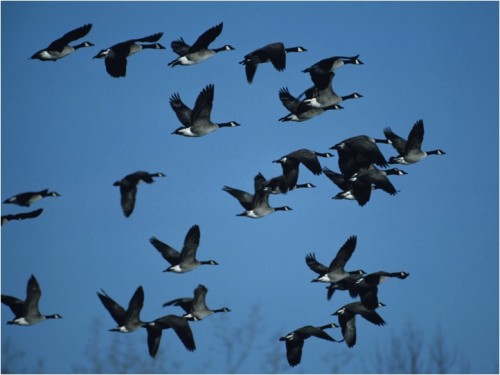Human impacts on the environment are progressively altering ecosystems across the world. In this lesson we explore the dramatic effects of these human impacts on a well-known example, Monarch butterflies, and introduce realistic steps students can take to help address this problem. In the first part of this lesson students will play a game where they will learn the hazards facing Monarch butterflies on their annual migration from Mexico to the Midwest. In the middle of the lesson students will learn how to build a butterfly garden at their schools that will provide critical breeding resources to Monarchs as well as attract and support other butterfly species. We provide resources where you can find milkweed seeds to plant in your own garden. At the end of the lesson we provide a Butterfly Garden Bingo exercise to help students explore other plants and animals that can be found in established butterfly gardens. This exercise can be used with the BEST plots or in your own garden.
At the conclusion of the lesson, students will be able to:
- Explain several reasons why milkweed populations in the United States are in decline and how this threatens Monarch butterfly populations
- Explain why milkweed is an important resource for Monarchs
- Construct a butterfly garden as a refuge for Monarchs and other butterflies
- Identify other plants and animals in established butterfly gardens (or the BEST plots!).
Length of Lesson
Full lesson: 60 min class period
Monarch Migration Game only: 30 min
Butterfly Garden Bingo only: 20-30min
Grade Levels
Elementary
Resources:
Lesson created by Dustin Kincaid, Cara Krieg, and Susan Magnoli, 2014



